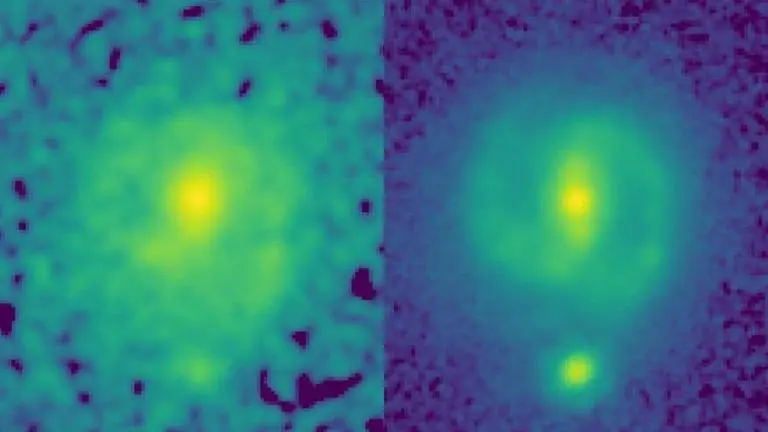Updated 6 January 2023 at 18:05 IST
Webb telescope finds Milky Way-like galaxies formed right after big-bang for the 1st time
The James Webb Space Telescope (JWST) has discovered Milky Way-like spiral galaxies which were born shortly after the big bang 13.7 billion years ago.
- Science News
- 2 min read

The James Webb Space Telescope (JWST) has discovered spiral galaxies which were born shortly after the big bang (in cosmic terms), the event that is believed to have birthed the universe roughly 13.7 billion years ago. This claim was made in a study conducted as part of the Cosmic Evolution Early Release Science Survey (CEERS) by researchers including those from the University of Texas. The experts revealed that the Webb telescope has photographed Milky Way-like spiral galaxies with a never-seen-before feature-- bars.
(Galaxies spotted by Webb telescope; Image: NASA/CEERS/University of Texas at Austin)
The pictures above show six young galaxies which were previously invisible to the Hubble telescope but were photographed using Webb's infrared vision. "The bars hardly visible in Hubble data just popped out in the JWST image, showing the tremendous power of JWST to see the underlying structure in galaxies," Shardha Jogee, professor of astronomy at The University of Texas said in a statement. These bars have an important role in galaxy evolution as they boost star formation by funneling gas into a galaxy's central regions.
"Just like we need to bring raw material from the harbor to inland factories that make new products, a bar powerfully transports gas into the central region where the gas is rapidly converted into new stars at a rate typically 10 to 100 times faster than in the rest of the galaxy," she explained. The same process also helps to grow supermassive black holes at the galactic centres by channeling the gas into them.
Advertisement
"This discovery of early bars means galaxy evolution models now have a new pathway via bars to accelerate the production of new stars at early epochs," Jogee said. According to the study, the galaxy designated EGS-24268 is about 11 billion years old, making it one of the objects to be observed farthest back in time. The galaxy EGS-23205 also intrigued the astronomers as it is a spiral galaxy with a clear stellar bar. All of the other galaxies are estimated to be more than eight billion years old.
Moving forward, the experts will carry out further studies to get the galaxy physics right as these early bars are said to be challenging theoretical models. The team led by UT Austin professor, Steven Finkelstein, will be testing different models in its next papers to predict the correct abundance of the bars which fuel galactic evolution.
Advertisement
Published By : Harsh Vardhan
Published On: 6 January 2023 at 18:05 IST

